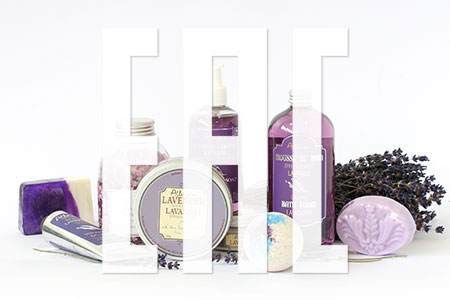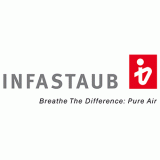
The Technical Regulation of the customs union TR CU 009/2011 On safety of perfumes and cosmetic products contains safety requirements for perfumery and cosmetic products, which are packaged for consumption and distribution in the EAEU. These rules are set for the protection of life, health, environment and property. The safety requirements are also applied to the products themselves. Furthermore, the rules aim to prevent misleading actions against the consumer.
The TR CU 009/2011 should ensure the uniform application and enforcement of the requirements for perfumes and cosmetic products in the territory of the customs union as well as the free movement of goods.
The perfumes and cosmetic products are safe in according to the TR CU 009/2011, if they meet the following criteria:
- composition
- physical and chemical parameters
- microbiological parameters
- content of toxic substances
- amount of toxic measured values
- clinical (clinical-laboratory) measurements
- processing
- consumer packaging
- marking of products
Adopted on September 23, 2011
Came into force on July 1, 2012
The perfumes and cosmetic products are only allowed to enter the market in Russia and the EAEU when their conformity has been confirmed.
Application area of TR CU 009/2011
The Technical Regulation TR CU 009/2011 applies to perfumes and cosmetic products which are packaged for consumption in Russia and the EAEU.
The rules of TR CU 009/2011 are not applied to:
The Technical Regulation TR CU 009/2011 does not apply to products which are intended for:
- swallowing
- inhaling
- injection
- implantation
The conformity assessment process
The conformity assessment is carried out by the manufacturer (the authorized representative, importer). The confirmation of conformity with the requirements of the TR CU 009/2011 On safety of perfumes and cosmetic products, with the exception of products specified in Annex 12 of TR CU 009/2011, in the form of an EAC Declaration is available on the basis of manufacturer documentation.
The conformity of the products listed in Annex 12 is carried out in the form of the state registration.
This includes:
- tanning creams
- remedies for skin whitening
- permanent make-up products
- perfumes and cosmetic products for intimate care
- cosmetics for children
- peelings
- depilatories
- hair lighteners
- perfumes and cosmetic products for permanent waves and hair straightening
- perfumes and cosmetic products with nanoparticles
- fluorinated oral hygiene products with a mass fraction of fluorides exceeding 0.15%
- teeth whitening agents containing hydrogen peroxide, carbamide peroxide, zinc peroxide (hydrogen concentration not exceeding 0.1 to 6%)
Accompanying documents
The supporting documents must be submitted in Russian or in the official language of the member state of the customs union. The accompanying documents include:
- product description
- instruction manual
- labels
- test reports
- data sheet
- composition
- copy of the quality management system certificate
EAC marking

The products which conform with the requirements of TR CU 009/2011 , shall be marked with the EAC sign of the customs union. The marking itself must be affixed directly to each product or to the corresponding shipping documents. The marking must be made so that it is clearly legible and identifyable during the entirety if the product's lifespan. The appropriate marking may only be made when all necessary requirements for the Technical Regulation have been fulfilled.
Labeling of Perfume and Cosmetics
The technical regulation TR CU 009/2011 On the Safety of Perfumery and Cosmetic Products stipulates that labeling in the form of inscriptions, digital, color, or graphic designations must be applied to the consumer packaging as well as the label. If the product has a sticker, a graphic symbol in the form of a hand on an open book must be displayed.
The following information must be included:
- Product name
- Intended use
- Cosmetics for children must be appropriately labeled
- Name and address of the manufacturer
- Country of origin, if different from the manufacturer's address
- Name and address of the importer or authorized representative
- Nominal quantity (volume or mass) of the product in the consumer package, excluding perfumes and cosmetics with a nominal weight of less than 5 g or testers
- Color and/or shade (for decorative cosmetics and dyes)
- Mass fraction of fluoride (% or mg/kg or ppm) for oral hygiene products containing fluoride
- Expiration date: manufacturing date (month and year) and shelf life (months, years)
- Description of storage conditions, if they differ from the standard
- Special precautions
- Batch number or special code for identifying the batch
- Information on the use of perfumes and cosmetics
- List of ingredients
- EAC mark
Honest Sign (Chestny Znak) Traceability System
In addition to the EAC certification, for many product groups exported to Russia, the digital labeling in the “Chestny ZNAK” system has also been mandatory for several years. This traceability system, introduced by the Government of the Russian Federation, is based on a Data Matrix code that uniquely identifies each individual product unit and registers it in a central database. The goal is to eliminate counterfeit, smuggled, and non-compliant products from the market and to ensure full transparency throughout the supply chain.
Stages and Deadlines for the Labeling of Cosmetics
The list of products subject to mandatory labeling is continuously expanding. Starting from 2025, labeling will be required for the following products:
- March 1, 2025 – labeling of soaps
- July 1, 2025 – mandatory labeling of deodorants, hair care, and shaving products
- October 1, 2025 – mandatory labeling of decorative cosmetics and toothpastes
The sale of unlabelled remaining stock is permitted until the expiration date. An overview of all product categories already included can be found in our articles: Mandatory Labeling of Goods. “Chestny ZNAK” Goods Labeling System and Labeling of Goods in the “Chestny ZNAK” System.
Application of “Chestny ZNAK”
Labeling codes are applied to the following types of packaging:
- PET bottles
- Cardboard packaging
- Glass bottles
- Metal flacons / metal containers
- Aerosol cans
- Polymer containers / plastic jars
- Paper packaging and bags
- Foil packaging and bags
- Tubes and jars
- Doypacks and flowpacks
- Sachet bags
- Plastic canisters
Note: Manufacturers may apply the codes directly to the packaging, integrate them into the label design, or print separate labels and affix them afterward.
Our Support
Schmidt & Schmidt supports you at every stage — from analyzing whether your products are subject to labeling, to registration in the Chestny ZNAK system, ordering and managing codes, and practical implementation of marking and integration into your document management system. Thanks to our international presence, we ensure that all processes are carried out in full legal compliance and in accordance with the requirements of the Russian authorities.
Period of validity of the EAC Declaration
The declaration for perfumes and cosmetic products is valid for 3 years.
On safety of perfumes and cosmetic products in the Russian language



















































